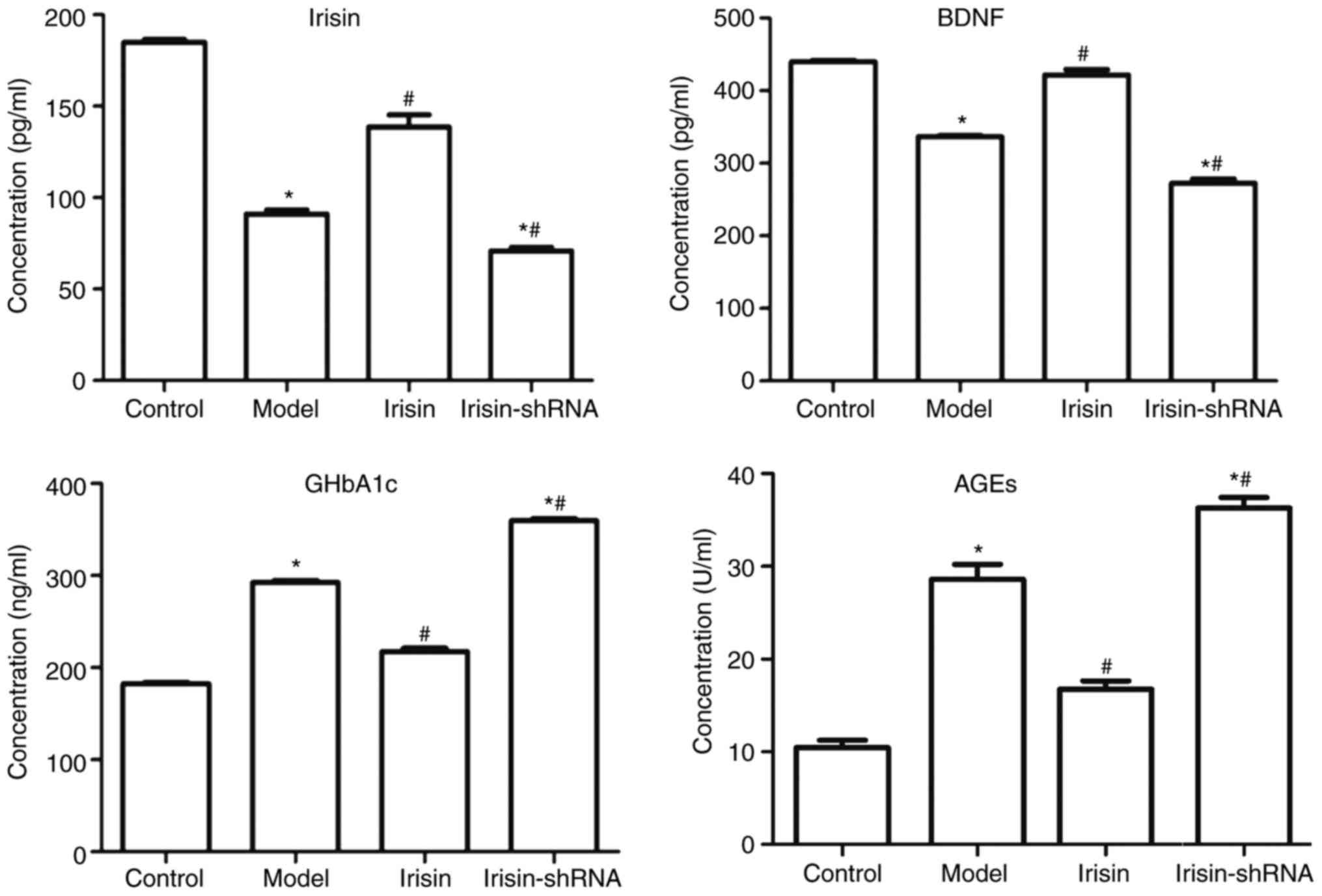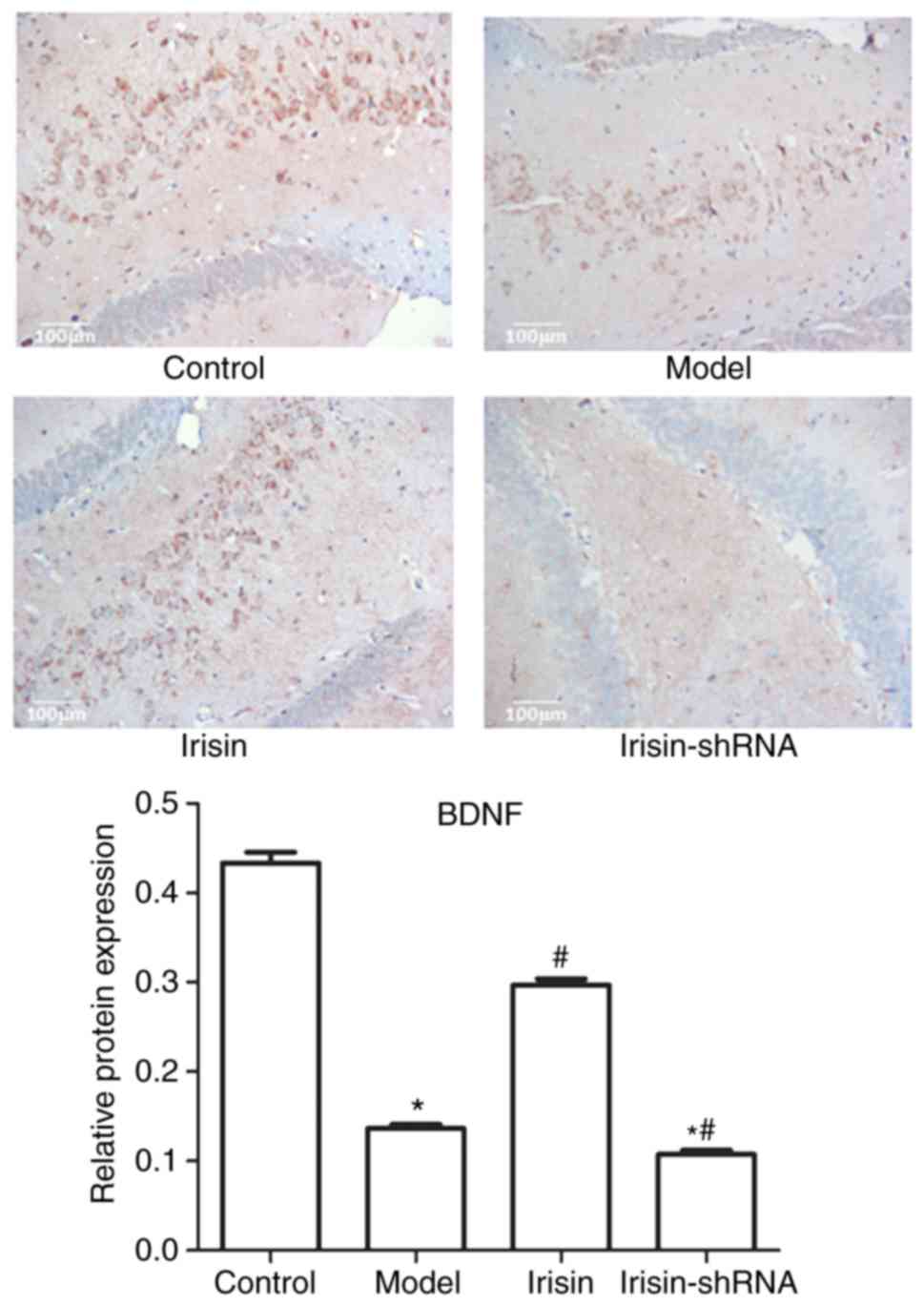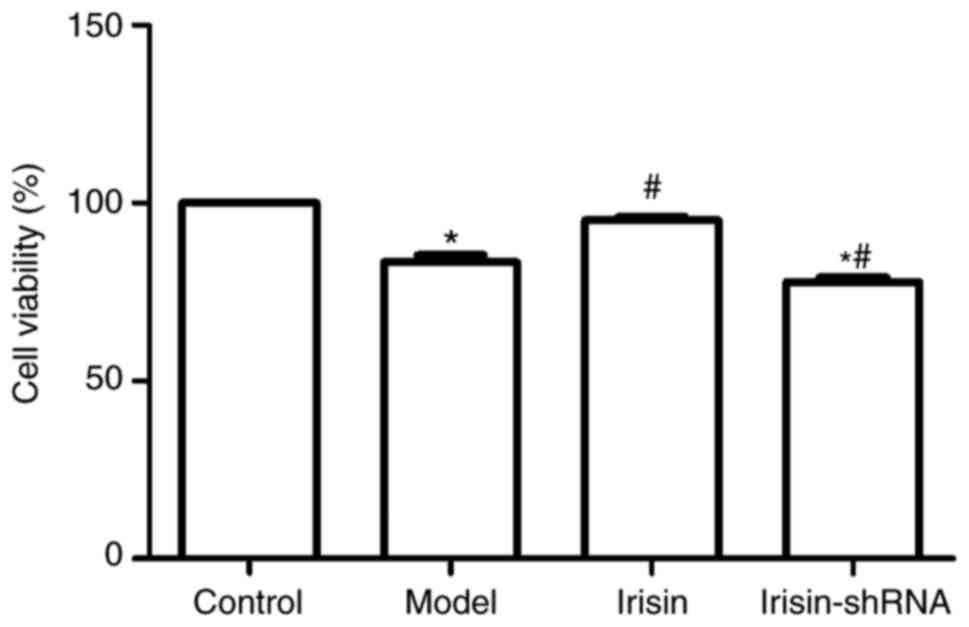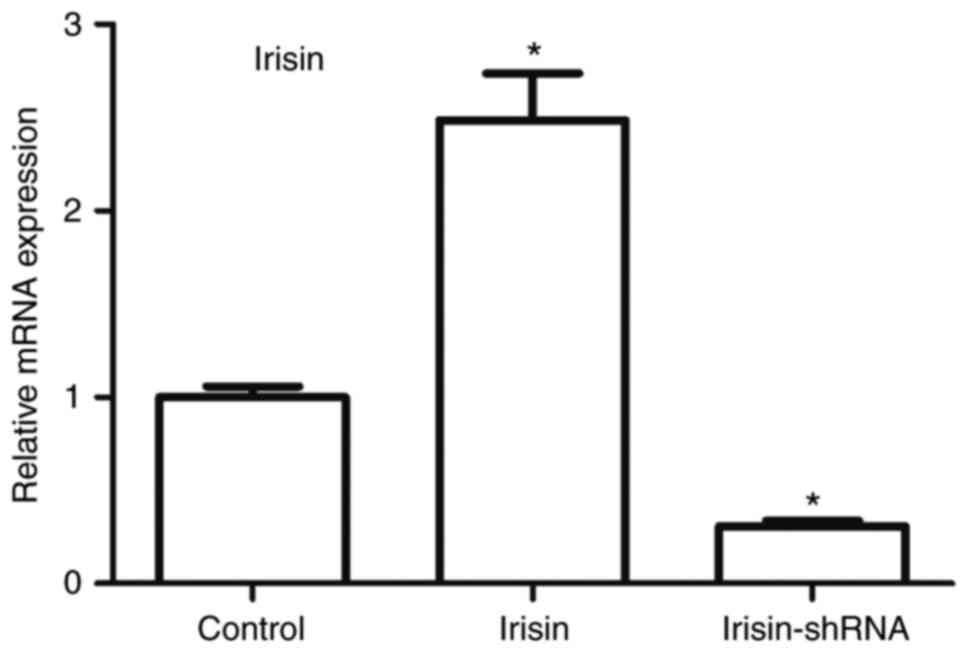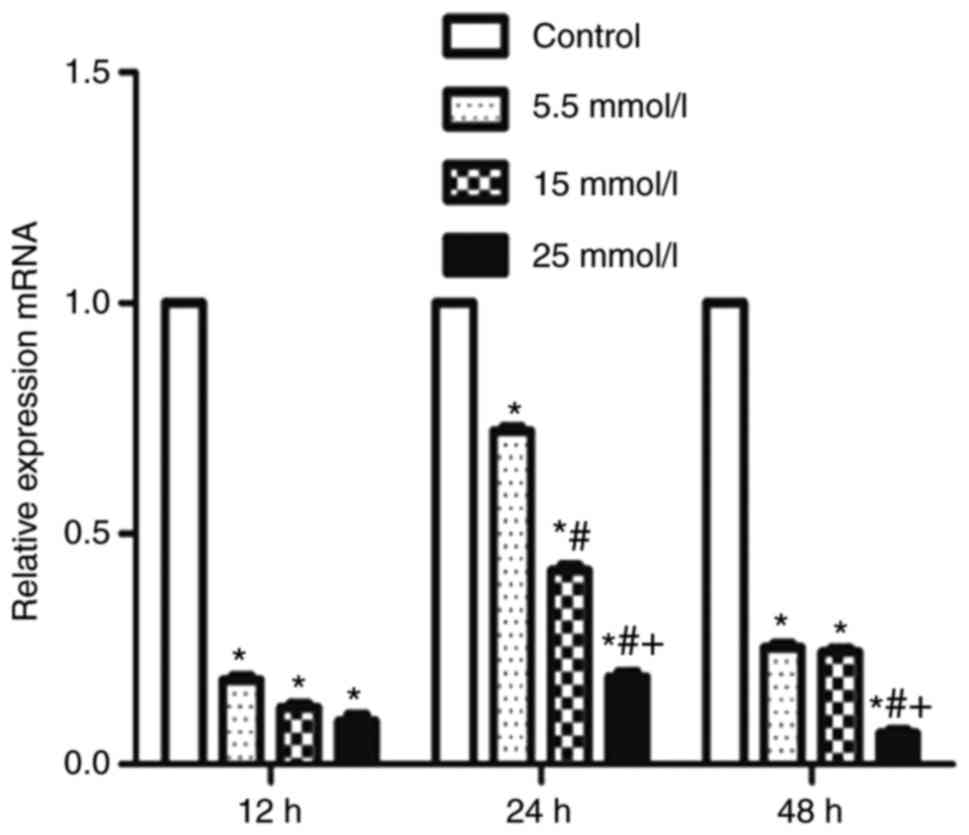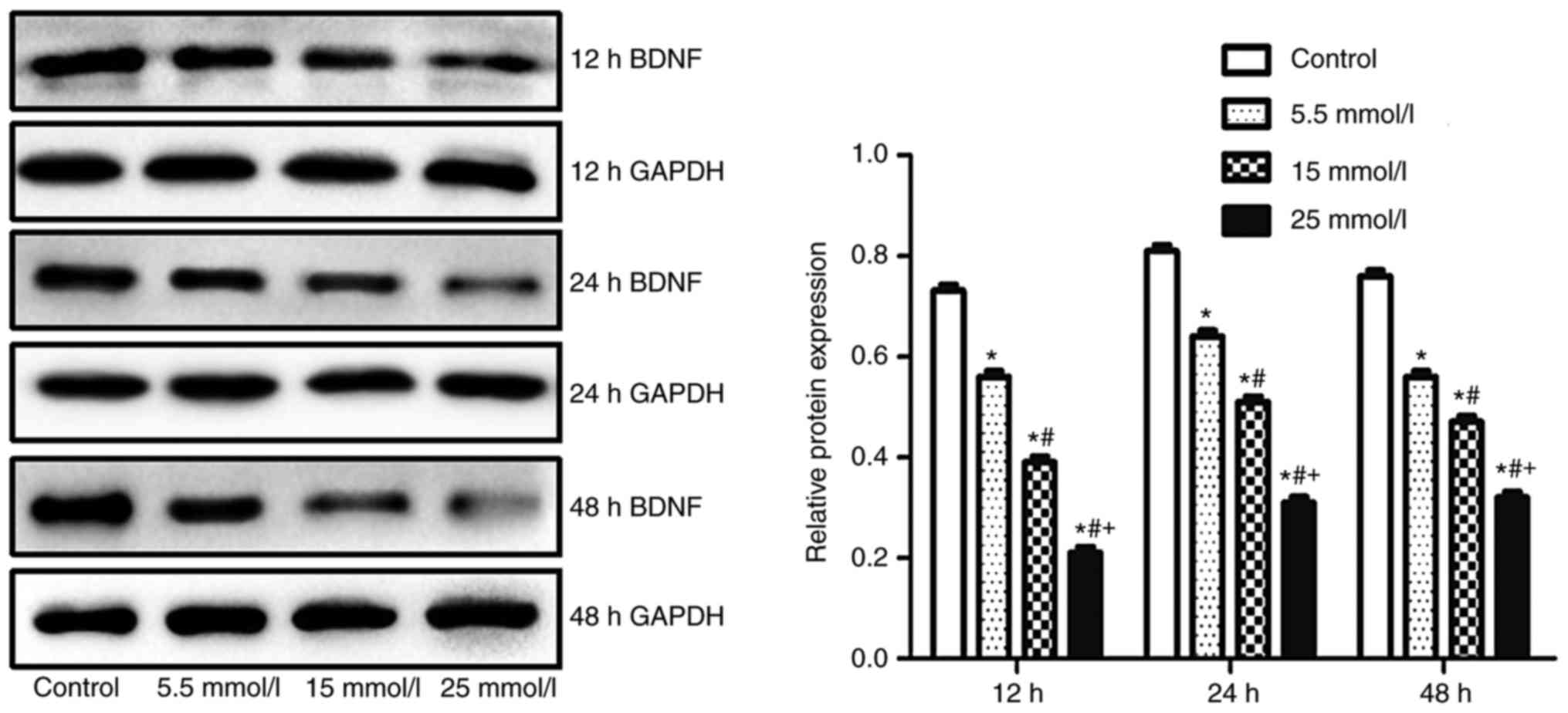|
1
|
Schnaider Beeri M, Goldbourt U, Silverman
JM, Noy S, Schmeidler J, Ravona-Springer R, Sverdlick A and
Davidson M: Diabetes mellitus in midlife and the risk of dementia
three decades later. Neurology. 63:1902–1907. 2004. View Article : Google Scholar : PubMed/NCBI
|
|
2
|
Su J, Li H and Yang W: Diabetes associated
cognitive impairment: A problem should not be ignored. Chin J
Endocrinol Metab. 24:476–479. 2008.
|
|
3
|
Qu MH, Fang CY, Zhang XR, Zhao CZ, Mao SM
and Gao ZQ: Type 2 diabetes and mild cognitive impairment. Prog
Biochem Biophys. 39:791–795. 2012. View Article : Google Scholar
|
|
4
|
Munshi M, Grande L, Hayes M, Ayres D, Suhl
E, Capelson R, Lin S, Milberg W and Weinger K: Cognitive
dysfunction is associated with poor diabetes control in older
adults. Diabetes Care. 29:1794–1799. 2006. View Article : Google Scholar : PubMed/NCBI
|
|
5
|
Prada PO, Zecchin HG, Gasparetti AL,
Torsoni MA, Ueno M, Hirata AE, Corezola do Amaral ME, Höer NF,
Boschero AC and Saad MJ: Western diet modulates insulin signaling,
c-Jun N-terminal kinase activity and insulin receptor
substrate-1ser307 phosphorylation in a tissue-specific fashion.
Endocrinology. 146:1576–1587. 2005. View Article : Google Scholar : PubMed/NCBI
|
|
6
|
Irie F, Fitzpatrick AL, Lopez OL, Kuller
LH, Peila R, Newman AB and Launer LJ: Enhanced risk for Alzheimer
disease in persons with type 2 diabetes: The Cardiovascular Health
Study Cognition Study. Arch Neural. 65:89–93. 2008. View Article : Google Scholar
|
|
7
|
De Matteis R, Lucertini F, Guescini M,
Polidori E, Zeppa S, Stocchi V, Cinti S and Cuppini R: Exercise as
a new physiological stimulus for brown adipose tissue activity.
Nutr Metab Cardiovasc Dis. 23:582–590. 2013. View Article : Google Scholar : PubMed/NCBI
|
|
8
|
Timmons JA, Baar K, Davidsen PK and
Atherton PJ: Is irisin a human exercise gene? Nature. 488:E9–E11.
2012. View Article : Google Scholar : PubMed/NCBI
|
|
9
|
Erden Y, Tekin S, Sandal S, Onalan EE,
Tektemur A and Kirbag S: Effects of central irisin administration
on the uncoupling proteins in rat brain. Neurosci Lett. 618:6–13.
2016. View Article : Google Scholar : PubMed/NCBI
|
|
10
|
Boström P, Wu J, Jedrychowski MP, Korde A,
Ye L, Lo JC, Rasbach KA, Boström EA, Choi JH, Long JZ, et al: A
PGC1-α-dependent myokine that drives brown-fat-like development of
white fat and thermogenesis. Nature. 481:463–468. 2012. View Article : Google Scholar : PubMed/NCBI
|
|
11
|
Huh JY, Panagiotou G, Mougios V,
Brinkoetter M, Vamvini MT, Schneider BE and Mantzoros CS: FNDC5 and
irisin in humans: I. Predictors of circulating concentrations in
serum and plasma II. mRNA expression and circulating concentrations
in response to weight loss and exercise. Metabolism. 61:1725–1738.
2012. View Article : Google Scholar : PubMed/NCBI
|
|
12
|
Castillo-Quan JI: From white to brown fat
through the PGC-1α-dependent myokine irisin: Implications for
diabetes and obesity. Dis Model Mech. 5:293–295. 2012. View Article : Google Scholar : PubMed/NCBI
|
|
13
|
Sharma N, Castorena CM and Cartee GD:
Greater insulin sensitivity in calorie restricted rats occurs with
unaltered circulating levels of several important myokines and
cytokines. Nutr Metab (Lond). 9:902012. View Article : Google Scholar : PubMed/NCBI
|
|
14
|
Teufel A, Malik N, Mukhopadhyay M and
Westphal H: Frcp1 and Frcp2, two novel fibronectin type III repeat
containing genes. Gene. 297:79–83. 2002. View Article : Google Scholar : PubMed/NCBI
|
|
15
|
Ferrer-Martínez A, Ruiz-Lozano P and Chien
KR: Mouse PeP: A novel peroxisomal protein linked to myoblast
differentiation and development. Dev Dyn. 224:154–167. 2002.
View Article : Google Scholar : PubMed/NCBI
|
|
16
|
Livak KJ and Schmittgen TD: Analysis of
relative gene expression data using real-time quantitative PCR and
the 2(-Delta Delta C(T)) method. Methods. 25:402–408. 2001.
View Article : Google Scholar : PubMed/NCBI
|
|
17
|
Takayama Y: Mild cognitive impairment
(MCI) and visual symptoms. Neuro-Ophthalmol Japan. 30:259–266.
2013.
|
|
18
|
Failla MD, Conley YP and Wagner AK:
Brain-derived neurotrophic factor (BDNF) in traumatic brain
injury-related mortality: Interrelationships between genetics and
acute systemic and central nervous system BDNF profiles.
Neurorehabil Neural Repair. 30:83–93. 2016. View Article : Google Scholar : PubMed/NCBI
|
|
19
|
Schneider B, Prvulovic D, Oertel-Knöchel
V, Knöchel C, Reinke B, Grexa M, Weber B and Hampel H: Biomarkers
for major depression and its delineation from neurodegenerative
disorders. Prog Neurobiol. 95:703–717. 2011. View Article : Google Scholar : PubMed/NCBI
|
|
20
|
Zou Y, Qing L, Zeng X, Shen Y, Zhong Y,
Liu J, Li Q, Chen K, Lv Y, Huang D, et al: Cognitive function and
plasma BDNF levels among manganese-exposed smelters. Occup Environ
Med. 71:189–194. 2014. View Article : Google Scholar : PubMed/NCBI
|
|
21
|
Laske C, Stransky E, Leyhe T, Eschweiler
GW, Maetzler W, Wittorf A, Soekadar S, Richartz E, Koehler N,
Bartels M, et al: BDNF serum and CSF concentrations in Alzheimer's
disease, normal pressure hydrocephalus and healthy controls. J
Psychiatr Res. 41:387–394. 2007. View Article : Google Scholar : PubMed/NCBI
|
|
22
|
Butt ZD, Hackett JD and Volkoff H: Irisin
in goldfish (Carassius auratus): Effects of irisin injections on
feeding behavior and expression of appetite regulators, uncoupling
proteins and lipoprotein lipase, and fasting-induced changes in
FNDC5 expression. Peptides. 90:27–36. 2017. View Article : Google Scholar : PubMed/NCBI
|
|
23
|
Esposito K, Chiodini P, Maiorino MI,
Capuano A, Cozzolino D, Petrizzo M, Bellastella G and Giugliano D:
A nomogram to estimate the HbA1c response to different DPP-4
inhibitors in type 2 diabetes: A systematic review and
meta-analysis of 98 trials with 24 163 patients. BMJ Open.
5:e0058922015. View Article : Google Scholar : PubMed/NCBI
|
|
24
|
Belviranli M, Okudan N, Kabak B, Erdoğan M
and Karanfilci M: The relationship between brain-derived
neurotrophic factor, irisin and cognitive skills of endurance
athletes. Phys Sportsmed. 44:290–296. 2016. View Article : Google Scholar : PubMed/NCBI
|
|
25
|
Geijselaers SLC, Sep SJS, Stehouwer CDA
and Biessels GJ: Glucose regulation, cognition, and brain MRI in
type 2 diabetes: A systematic review. Lancet Diabetes Endocrinol.
3:75–89. 2015. View Article : Google Scholar : PubMed/NCBI
|
|
26
|
Luo J, Xue H, Chen Y, Wu F, Meng G and Xu
J: Effect of Ganoderma lucidum polysaccharides on expression
of AGEs and AGER in myocardium of T2DM rats. Pharmacol Clin Chin
Materia Medica. 27:40–43. 2011.
|
|
27
|
Yurchenco PD and Schittny JC: Molecular
architecture of basement membranes. FASEB J. 4:1572–1590. 1990.
View Article : Google Scholar
|
|
28
|
McIsaac W and Ferguson AV: Glucose
concentrations modulate brain-derived neurotrophic factor
responsiveness of neurones in the paraventricular nucleus of the
hypothalamus. J Neuroendocrinol. 29:2017. View Article : Google Scholar : PubMed/NCBI
|















